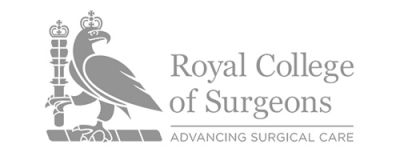HIP IMPINGEMENT
Within the hip joint the head of the femur and the acetabulum (socket) are coated with articular cartilage to permit smooth movement.
Around the rim of the acetabulum sits a lip of fibrous cartilage that is triangular in cross-section, called the labrum. The labrum improves the stability of the hip and, along with the joint capsule, helps to ‘seal’ the hip joint.
Both the labrum and the articular cartilage can be damaged by injury to the hip. However, the most common cause of damage to the labrum and articular cartilage is as a result of impingement, or to give it it’s proper name femoroacetabular impingement (FAI).
FEMOROACETABULAR IMPINGEMENT
This is a condition that has only recently been recognised as a cause of hip symptoms. It is thought to be the underlying cause for >75% of all cases of osteoarthritis of the hip. Impingement results either because the femoral head (ball) is not quite spherical or because the acetabulum (socket) is too deep; thus when the hip is flexed fully the neck of the femur is pushed against the labrum and acetabulum at the front of the hip, causing damage to these structures. There are 2 basic types of Hip Impingement. CAM impingement occurs when the femoral head is not spherical. PINCER impingement occurs when the acetabulum is too deep (or points slightly backwards – retroverted). If both types of impingement are present it is termed MIXED impingement.
Symptoms are of groin pain which is related to activity. Sports, sitting and driving aggravate symptoms. There may also be mechanical symptoms such as catching, locking and pain when pivoting. Examination reveals pain when the hip is flexed, adducted (brought across the body) and internally rotated. This is termed a positive impingement test.
LABRIAL TEARS
Tears of the labrum are usually caused by sudden pivoting or twisting actions but can also occur as a result of developmental hip problems such as Perthes’ disease, slipped upper femoral epiphysis or developmental dysplasia. Most labral tears occur as a result of hip impingement.
The symptoms of a labral tear include groin pain, catching, clicking or locking of the hip.
Examination may be relatively unremarkable but if the hip is flexed fully, brought across the body (adducted) and rotated internally, pain and catching may be felt. There may be an audible ‘clunk’.
ARTICULAR CARTILAGE TEARS
These are also known as Chondral Injuries. They are frequently found along with labral tears, osteoarthritis, dysplasia and avascular necrosis, but are also caused by trauma, especially by a direct blow to the outer part of the thigh (‘lateral impact injury’). Most chondral injuries occur as a result of hip impingement. Symptoms of chondral injuries are similar to those of a labral tear but they are usually more painful and the patient may have a significant limp with a very irritable hip on examination.
Discussion with James is important to answer any questions that you may have. For information about any additional conditions not featured within the site, please contact us for more information.







